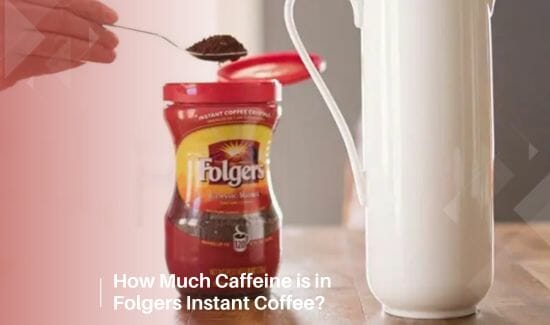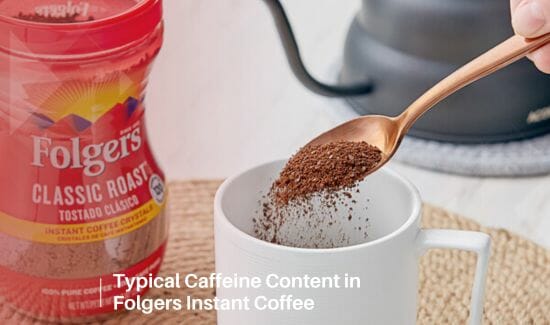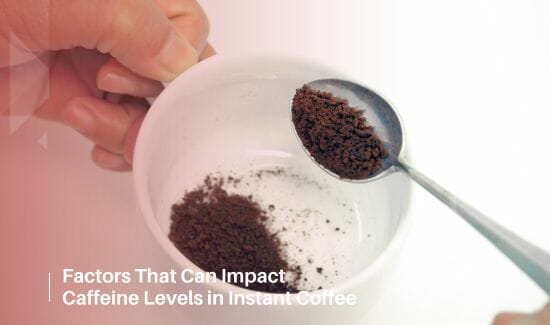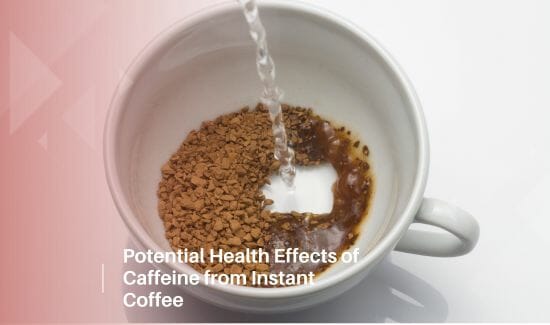
Folgers is one of the most popular and widely available brands of instant coffee. Instant coffee is appreciated by many people for its convenience, affordability, and ability to quickly prepare a hot cup of coffee by just adding hot water. But when it comes to caffeine content, how does Folgers instant coffee compare to traditional brewed coffee? Let’s take a detailed look at how much caffeine is in Folgers instant coffee products.

Typical Caffeine Content in Folgers Instant Coffee
According to the nutritional information provided by Folgers, their classic instant coffee contains approximately 60-65 milligrams of caffeine per teaspoon (about 5 grams) of coffee powder. This means a 6-ounce cup prepared with 2 teaspoons of Folgers instant coffee will contain 120-130 mg of caffeine. Some key caffeine stats per serving:
- Folgers Classic Roast instant coffee: 57-65 mg per teaspoon
- Folgers 100% Pure Decaf instant coffee: 2-5 mg per teaspoon
- Folgers Flavored instant coffee (Mocha, Vanilla): 60-68 mg per teaspoon
So Folger’s regular instant coffee has slightly less caffeine than a home-brewed cup of drip coffee which typically provides 100-150 mg per 8-ounce cup depending on brew method and coffee origin. But overall, it is still a significant source of caffeine.

Understanding How Instant Coffee is Made
Instant coffee starts off from roasted coffee beans, just like regular coffee. To make instant coffee, the beans are brewed into a strong concentrated liquid extract. This coffee extract is then dried, either through freeze-drying or spray-drying methods. The dried coffee dissolves when hot water is added.
Some caffeine loss occurs during the manufacturing and drying process for instant coffee. Typically, instant coffee retains around 70-80% of the original caffeine from the beans. This may account for the lower levels seen in instant coffee versus drip methods. However, the caffeine that remains is chemically identical.

Factors That Can Impact Caffeine Levels in Instant Coffee
While the average caffeine content per serving is fairly consistent, there are some factors that can alter the caffeine levels in instant coffee:
- Serving size – Using more teaspoons of instant granules per cup will increase the total caffeine. Likewise, smaller servings will reduce the amount.
- Coffee variety and roast level – Light roasts tend to have slightly more caffeine than darker roasts. Different coffee species also naturally contain varying caffeine concentrations.
- Individual sensitivity – Some people metabolize caffeine faster based on genetic differences resulting in different effects for the same caffeine dose.
- Preparation method – Brewing time, temperature, and coffee-to-water ratio can impact caffeine extraction.
Is the Caffeine Different in Instant and Brewed Coffee?
While instant coffee contains less caffeine than drip coffee, the chemical structure of caffeine itself is exactly the same. Once consumed, the body aborts and processes caffeine from instant coffee in the same way as it does from ground coffee.
Many of the effects of caffeine are dependent on dose rather than source. So a cup of instant coffee that contains 60-65 mg of caffeine will typically have similar effects as an equal dose of caffeine from brewed coffee, tea, or other sources.

Potential Health Effects of Caffeine from Instant Coffee
Like other dietary sources of caffeine, Folgers instant coffee can provide an energetic lift but too much may result in unwanted side effects:
- Benefits in moderation may include increased alertness, focus, and concentration.
- Downsides of excess intake can include anxiety, insomnia, restlessness, irritability, digestive issues, and rapid heart rate.
Health experts advise limiting total caffeine intake to 400 mg daily or less. Drinking 3-4 cups of Folgers instant coffee would fall within this range for most healthy adults. Those with high caffeine sensitivity may want to limit intake to 1-2 cups.
Conclusion and Recommendations:
In summary, a teaspoon of Folgers classic instant coffee comes with approximately 60 milligrams of caffeine. This is 10-20% lower than a cup of brewed drip coffee but still provides a moderate dose of caffeine. To avoid excessive caffeine consumption, limit the use of instant coffee to 2-4 servings daily and avoid additions like extra granules or syrups with caffeine. Those who are very sensitive or prone to anxiety from caffeine may consider switching to decaf varieties instead.
Frequently Asked Questions:
How many cups of instant coffee are safe per day?
Health experts suggest limiting caffeine to 400 mg daily or less. So most healthy adults can safely consume 3-4 cups of Folgers classic instant coffee (60 mg per cup) daily without adverse effects.
Does instant coffee have the same health effects as brewed coffee?
Yes, health effects are based on the dose of caffeine consumed rather than the source. Instant and brewed coffee contain the same caffeine molecule so 1 cup with 60mg caffeine will have the same effect whether it’s instant or drip coffee.
Is the caffeine content the same for all Folger’s instant coffee flavors?
Mostly yes. Classic blends contain 57-65 mg per teaspoon. Decaf has only trace amounts. Flavored varieties like mocha and French vanilla have very similar caffeine content to classic blends, around 60-68 mg per teaspoon.

As a dedicated blogger, I share insights, tips, and knowledge on all things caffeinated and beyond. I firmly believe that a well-brewed cup of coffee or a skillfully crafted cocktail has the power to unite people and ignite engaging conversations.


